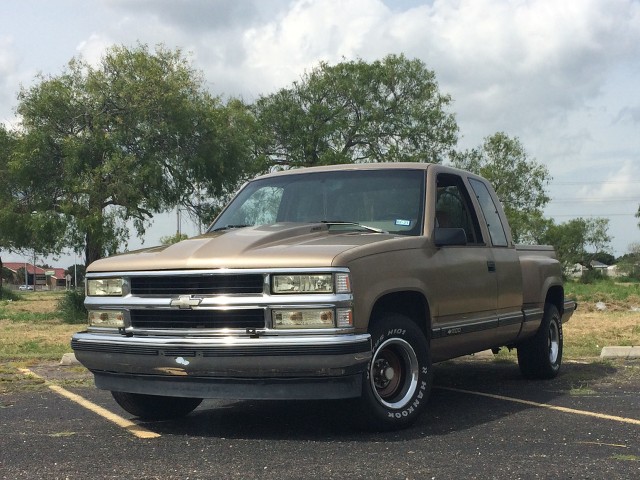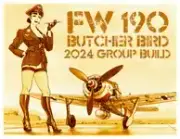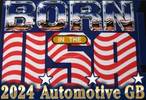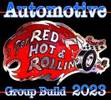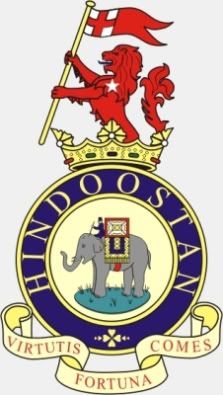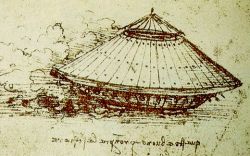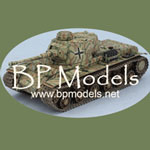Post by mshackleton on Sept 4, 2012 4:28:11 GMT -5
British Heavy Assault tank, A39, Tortoise

Meng Model
Catalogue No.: TS-002
Reviewed and built by: Michael Shackleton
The model was kindly supplied by Meng Model.
Introduction
Meng have certainly surprised us with their initial releases and this is the first model from Meng that I have actually seen. Meng are a new company, so who are Meng? Meng is the marketing name for Rui Ye International Co., Limited who were founded in Hong Kong in 2011. To quote from their website, “The company is dedicated to developing and selling high-end scale model kits. It has an excellent R&D team as well as a mature marketing team. With the aim to provide top-notch models for model fans worldwide, we have been trying to reproduce every detail of the original objects, to provide enthusiasts with both perfect model kits and wonderful modelling experience. With the expanding brand culture, we are currently growing fast and heading towards the goal of becoming the world’s top model brand.”
This model of the Tortoise was researched with the full co-operation of The Tank Museum at Bovington in England, the home of the only complete (and running) survivor. Who would ever have thought that this beast would ever see the light of day in plastic?
This is the first build blog I have ever done anywhere, so here goes! I’ll start off like I do my usual reviews and then get the knife and glue out.
Background
In the early part of 1943, the Allied forces anticipated considerable resistance in the projected invasion of Europe with the enemy fighting from heavily fortified positions such as the Siegfried Line. As a result, a new class of vehicles emerged, in the shape of the Assault tank which placed maximum armour protection at a higher priority than mobility. Initially, work was concentrated on the Excelsior tank (A33), based on Cromwell. There was also a programme to upgrade the armour of Churchill. For similar work in the Far East, the Valiant tank (A38), based on Valentine was considered, although weight was specified to be as low as possible.
The Secretary of State for War and the Minister of Supply issued a Joint Memorandum in April 1943 which gave a vague specification for an Assault tank, classing it as a special purpose vehicle to operate in heavily defended areas.
The Nuffield Organisation responded with 18 separate designs (AT1 through AT18). Drafted between May 1943 and February 1944, each design was larger and heavier than the last. By February 1944, AT16 was complete and was approved by the Tank Board who proposed that it be produced directly from the mockup stage without a prototype, to be available for operational service in September 1945. An order for 25 was placed by the War Office and work was begun.
The first tank finally appeared in 1946 by which time the War Office had lost interest in the project and in the end only six were manufactured. Two examples (some say just one) were sent to Germany in 1948 for trials where it was found to be mechanically reliable and a powerful and accurate gun platform. However, weighing in at 80 tons and with a height of 10 feet (3.0 m) it was extremely slow and considered too tall. They were difficult to transport and could damage roads and bridges but in firing trials the gun proved extremely accurate. However, it was hard work for the loader, despite the fact that shell and shell case were loaded separately and there was considerable criticism of the ammunition stowage arrangements. Tortoise was never accepted for active service.
The Tank Museum’s Tortoise was used in a motion study and in firing trials at Larkhill in 1949 before retirement at the museum.
Description
In strict terms, since the Tortoise had a fixed superstructure instead of a turret, so it should be classified as a self-propelled gun or an assault gun and not as a tank. The crew of seven consisted of a commander, driver, and gunner, with two loaders for the 32-pounder gun and two machine gunners.
Internally it was split into three compartments, the transmission to the front, the crew in the centre and the Rolls-Royce Meteor engine at the rear. The suspension consisted of four bogies on each side each of the hull. Each bogie had two pairs of wheels, with each pair linked to a transverse torsion bar. The Merritt-Brown transmission was fitted with an all speed reverse, giving approximately the same speed backwards as forwards.
The Ordnance QF 32 pounder gun design was adapted from the British 3.7 inch (94 mm) anti-aircraft gun. The ammunition used a separate charge and shell, the latter a 32-pound (14.5 kg) armour piercing shot (APCBC), fired at 3,600 feet/sec. In tests the gun was successful against a German Panther tank at nearly 1,000 yards. The 32-pdr gun was mounted in a power-assisted limited traverse mounting. It was supported in a giant ball mounting like an enormous gimbal, rather than conventional trunnions. This gun was capable of dealing with the most powerful German tanks of the war period and probably would have been a match for contemporary Soviet machines, but it was too heavy and too slow for the post-war battlefield. To the left of it was a Besa machine gun in an armoured ball mount. A further two Besa machine guns were mounted in a turret on the top of the hull to the right.
The tank rode on 36-inch wide tracks and had a double torsion bar suspension. The superstructure was a massive single casting. The armour had a maximum thickness of nearly 9 inches (225 mm). It seems that all the physical constraints that British tank designers had laboured under were discarded for this project! These included limits due to the railway loading gauge, the strength of Bailey Bridges and the width of landing craft ramps.
Survivors
One of the six production Tortoises has been preserved at the Bovington Tank Museum in Bovington, UK. The vehicle is in running condition. A 2011 overhaul saw it running under its own power for the first time since the 1950s. It was shown to the public in June 2011 at Tankfest 2011, the Bovington museum's annual display of running vehicles.
A Tortoise, without its gun, lies on the Kirkcudbright military training in Scotland. Other damage to the tank and the designation of the training area as a Site of Special Scientific Interest means that the removal of the Tortoise to a museum is very unlikely.
References
YouTube at TankFest 2011
www.youtube.com/watch?v=4wdu9C3Eu5k&feature=fvwrel
Walkaround sites
www.armourinfocus.co.uk/a39/index.htm
www.armorama.com/modules.php?op=modload&name=Sections&file=index&req=viewarticle&artid=4366
jtrowbridge5.smugmug.com/2012Albumassortedsubjects/a-Closer-look-The-Tortoise/23244732_89g7XQ#!i=1874596857&k=9qgr3xP
militarymodels.co.nz/2012/05/16/walkaround-british-tortoise-a39-heavy-tank/
History and detailed description with photos and drawings
chrisshillito.tripod.com/a39/a39txt.htm
Books
The Universal tank. British Armour in the Second World War, Part 2. David Fletcher. ISBN 0 11 290534 X, HMSO, London 1993
The Model
Upon opening the box you are presented with four cellophane bags with nine sprues containing the majority of the parts. A further smaller bag contains the rather large hull top and bottom. All of the sprues have identification letters and part numbers, with some parts. There are no decals, clear parts, crew figures or etch brass. The contents are:
Sprue A (2 off) - parts for the main suspension bogie units.

Sprue B (2 off) - further suspension parts, sprockets, idlers, tow hooks, spare track links, smoke launchers, periscopes, tow hooks (lots of them!) and small fittings.

Sprue C - exhaust system, hull parts, machine gun turret, hatches, muzzle counter weight, further small fittings.

Sprue D - side plates, main gun gimble mount, gun, commander’s cupola, electrical conduits.

Sprue E (3 off) - individual track links (144 links total)

Other parts - lower hull, upper hull, string for tow cables.


What strikes me immediately is how few parts there are compared to some of the smaller new releases I’ve seen recently. Over 50 per cent of the parts are in the suspension units and some of these will be hidden away when the side plates are fitted. The track links are nice and big which should hopefully speed up construction.
Instructions
The instructions are presented as a 16-page, small format booklet with colour on he covers inside and out. Each step is illustrated in a logical order with beautifully clear and large black and white line drawings. There are only 23 steps in the construction process.
There are no building options. There is no interior. There is no crew. There are no decals.
First Impressions
The overall quality of the parts is very, very good with excellent moulding. There is a virtual absence of ejector marks apart from where they will be hidden from view. Flash is almost non-existent. There is no sign of warping and no sink marks at all. Once again we are witnessing state-of-the-art moulding with crisp detail and an expected excellent fit of parts. Casting texture and weld beads on the superstructure, hull nose and machine gun turret is excellent. Due to the moulding process, there are some mould seams across some of this lovely cast texture which will need some careful removal with a very sharp curved blade and possible reinstatement with a dental bur - or your preferred method. The only other small negative is the presence of an oily release agent on some sprues, so I’d advise washing these in detergent before starting the build.




Note the seam lines which will have to be removed and the casting texture reinstated
Construction
This will be an out-of-the-box build without any additional detailing. I will follow the instructions but, as you will see, not to the letter as sometimes the steps seem a little crazy.
Not surprisingly, the build starts with the road gear. The two idlers go together very easily but note that the right-side assembly needs to have two collars removed from the cross member making this one shorter than the other. I nearly missed this and quite honestly I don’t understand why this side should be any different. The idlers are then mounted on the lower hull sides. The tub does not require any clean up other than a join seam across the cast texture on the lower nose. I may have to revisit this and add some Mr Surfacer to improve it.

Mounting plate B15 and B16 have to be added to the hull sides first. The instructions then tell you add further parts B15 and B16 to the outside ends. Don’t do this as there is no way to ensure they are lined up or angled correctly. Instead, glue them to the insides of the side plates where their fit will be guaranteed later on.

Sprockets are also built (the two halves are so snug they don’t need glue) and should also be added later when the side plates are fitted. The sprue attachment points are on the reverse of the sprockets, so there should not be any excuse for damaging the sprocket teeth.
There are now four bogie units to be built - per side - each with four road wheels. At first I followed the instructions but soon learnt not to! Steps 3 and 4 make the construction look easy, but in reality you need three hands, small fingers and ambidextrous tendencies. After building the first unit as per the instructions, I devised my own simpler method. Please follow the notes and photos below, not the instructions - unless you want to drive yourself crazy. I believe my sequence is far more logical.
1 Do not clip link arm A3 into axle arm A10.
2 Glue A10 in between the road wheels.
3 Suspension arms and the pivot bar can be added as per instructions. Make sure these are all square and allow the glue to set. Do not glue the arms to the wheels. They will need to move later on.

4 Beware that there are three types of unit that have to be built. The four units in the central positions have return rollers back and front. The front and rear units only have rollers on one side and shock absorbers on the other. Two of each have to built as mirrored units.
5 Glue together the two halves of the main suspension boxes together (B28, B29, B30 depending on which unit you are building), trapping the wider part of the link arms A3 onto the pins at the bottom, leaving them loose.

6 Add one end plate (A1) to the box structure.
7 The suspension arms have two locating pips. Introduce both pairs into the end plates and attach the second end plate (A1). Make sure that the arms are the correct way up. There is a semi-circular cup around the axle ends. The cup should be at the bottom and the bump rubbers at the top.
8 Finally, rotate the wheels so that the link on the axle in the middle is vertical and clip in the two link arms A3. Done!

The road wheels won’t rotate now, but this is a model, not a toy. You will also have a more solid construction and you will have saved some sanity and time.
I’m believer in not building what you cannot see. The return rollers and shock absorbers won’t be seen when the side plates are fitted, so I haven’t built them. However, if you want to know what they look like when completed, here is an image courtesy of Meng’s website.


The suspension units ready to be mounted on the hull
Part 2 carries on here:
modelerssocialclub.proboards.com/thread/3429/meng-tortoise-build-blog-2
And Part 3 here:
modelerssocialclub.proboards.com/thread/3431/meng-tortoise-build-blog-3
And Part 4 here:
modelerssocialclub.proboards.com/thread/3453/meng-tortoise-build-blog-4

Meng Model
Catalogue No.: TS-002
Reviewed and built by: Michael Shackleton
The model was kindly supplied by Meng Model.
Introduction
Meng have certainly surprised us with their initial releases and this is the first model from Meng that I have actually seen. Meng are a new company, so who are Meng? Meng is the marketing name for Rui Ye International Co., Limited who were founded in Hong Kong in 2011. To quote from their website, “The company is dedicated to developing and selling high-end scale model kits. It has an excellent R&D team as well as a mature marketing team. With the aim to provide top-notch models for model fans worldwide, we have been trying to reproduce every detail of the original objects, to provide enthusiasts with both perfect model kits and wonderful modelling experience. With the expanding brand culture, we are currently growing fast and heading towards the goal of becoming the world’s top model brand.”
This model of the Tortoise was researched with the full co-operation of The Tank Museum at Bovington in England, the home of the only complete (and running) survivor. Who would ever have thought that this beast would ever see the light of day in plastic?
This is the first build blog I have ever done anywhere, so here goes! I’ll start off like I do my usual reviews and then get the knife and glue out.
Background
In the early part of 1943, the Allied forces anticipated considerable resistance in the projected invasion of Europe with the enemy fighting from heavily fortified positions such as the Siegfried Line. As a result, a new class of vehicles emerged, in the shape of the Assault tank which placed maximum armour protection at a higher priority than mobility. Initially, work was concentrated on the Excelsior tank (A33), based on Cromwell. There was also a programme to upgrade the armour of Churchill. For similar work in the Far East, the Valiant tank (A38), based on Valentine was considered, although weight was specified to be as low as possible.
The Secretary of State for War and the Minister of Supply issued a Joint Memorandum in April 1943 which gave a vague specification for an Assault tank, classing it as a special purpose vehicle to operate in heavily defended areas.
The Nuffield Organisation responded with 18 separate designs (AT1 through AT18). Drafted between May 1943 and February 1944, each design was larger and heavier than the last. By February 1944, AT16 was complete and was approved by the Tank Board who proposed that it be produced directly from the mockup stage without a prototype, to be available for operational service in September 1945. An order for 25 was placed by the War Office and work was begun.
The first tank finally appeared in 1946 by which time the War Office had lost interest in the project and in the end only six were manufactured. Two examples (some say just one) were sent to Germany in 1948 for trials where it was found to be mechanically reliable and a powerful and accurate gun platform. However, weighing in at 80 tons and with a height of 10 feet (3.0 m) it was extremely slow and considered too tall. They were difficult to transport and could damage roads and bridges but in firing trials the gun proved extremely accurate. However, it was hard work for the loader, despite the fact that shell and shell case were loaded separately and there was considerable criticism of the ammunition stowage arrangements. Tortoise was never accepted for active service.
The Tank Museum’s Tortoise was used in a motion study and in firing trials at Larkhill in 1949 before retirement at the museum.
Description
In strict terms, since the Tortoise had a fixed superstructure instead of a turret, so it should be classified as a self-propelled gun or an assault gun and not as a tank. The crew of seven consisted of a commander, driver, and gunner, with two loaders for the 32-pounder gun and two machine gunners.
Internally it was split into three compartments, the transmission to the front, the crew in the centre and the Rolls-Royce Meteor engine at the rear. The suspension consisted of four bogies on each side each of the hull. Each bogie had two pairs of wheels, with each pair linked to a transverse torsion bar. The Merritt-Brown transmission was fitted with an all speed reverse, giving approximately the same speed backwards as forwards.
The Ordnance QF 32 pounder gun design was adapted from the British 3.7 inch (94 mm) anti-aircraft gun. The ammunition used a separate charge and shell, the latter a 32-pound (14.5 kg) armour piercing shot (APCBC), fired at 3,600 feet/sec. In tests the gun was successful against a German Panther tank at nearly 1,000 yards. The 32-pdr gun was mounted in a power-assisted limited traverse mounting. It was supported in a giant ball mounting like an enormous gimbal, rather than conventional trunnions. This gun was capable of dealing with the most powerful German tanks of the war period and probably would have been a match for contemporary Soviet machines, but it was too heavy and too slow for the post-war battlefield. To the left of it was a Besa machine gun in an armoured ball mount. A further two Besa machine guns were mounted in a turret on the top of the hull to the right.
The tank rode on 36-inch wide tracks and had a double torsion bar suspension. The superstructure was a massive single casting. The armour had a maximum thickness of nearly 9 inches (225 mm). It seems that all the physical constraints that British tank designers had laboured under were discarded for this project! These included limits due to the railway loading gauge, the strength of Bailey Bridges and the width of landing craft ramps.
Survivors
One of the six production Tortoises has been preserved at the Bovington Tank Museum in Bovington, UK. The vehicle is in running condition. A 2011 overhaul saw it running under its own power for the first time since the 1950s. It was shown to the public in June 2011 at Tankfest 2011, the Bovington museum's annual display of running vehicles.
A Tortoise, without its gun, lies on the Kirkcudbright military training in Scotland. Other damage to the tank and the designation of the training area as a Site of Special Scientific Interest means that the removal of the Tortoise to a museum is very unlikely.
References
YouTube at TankFest 2011
www.youtube.com/watch?v=4wdu9C3Eu5k&feature=fvwrel
Walkaround sites
www.armourinfocus.co.uk/a39/index.htm
www.armorama.com/modules.php?op=modload&name=Sections&file=index&req=viewarticle&artid=4366
jtrowbridge5.smugmug.com/2012Albumassortedsubjects/a-Closer-look-The-Tortoise/23244732_89g7XQ#!i=1874596857&k=9qgr3xP
militarymodels.co.nz/2012/05/16/walkaround-british-tortoise-a39-heavy-tank/
History and detailed description with photos and drawings
chrisshillito.tripod.com/a39/a39txt.htm
Books
The Universal tank. British Armour in the Second World War, Part 2. David Fletcher. ISBN 0 11 290534 X, HMSO, London 1993
The Model
Upon opening the box you are presented with four cellophane bags with nine sprues containing the majority of the parts. A further smaller bag contains the rather large hull top and bottom. All of the sprues have identification letters and part numbers, with some parts. There are no decals, clear parts, crew figures or etch brass. The contents are:
Sprue A (2 off) - parts for the main suspension bogie units.

Sprue B (2 off) - further suspension parts, sprockets, idlers, tow hooks, spare track links, smoke launchers, periscopes, tow hooks (lots of them!) and small fittings.

Sprue C - exhaust system, hull parts, machine gun turret, hatches, muzzle counter weight, further small fittings.

Sprue D - side plates, main gun gimble mount, gun, commander’s cupola, electrical conduits.

Sprue E (3 off) - individual track links (144 links total)

Other parts - lower hull, upper hull, string for tow cables.


What strikes me immediately is how few parts there are compared to some of the smaller new releases I’ve seen recently. Over 50 per cent of the parts are in the suspension units and some of these will be hidden away when the side plates are fitted. The track links are nice and big which should hopefully speed up construction.
Instructions
The instructions are presented as a 16-page, small format booklet with colour on he covers inside and out. Each step is illustrated in a logical order with beautifully clear and large black and white line drawings. There are only 23 steps in the construction process.
There are no building options. There is no interior. There is no crew. There are no decals.
First Impressions
The overall quality of the parts is very, very good with excellent moulding. There is a virtual absence of ejector marks apart from where they will be hidden from view. Flash is almost non-existent. There is no sign of warping and no sink marks at all. Once again we are witnessing state-of-the-art moulding with crisp detail and an expected excellent fit of parts. Casting texture and weld beads on the superstructure, hull nose and machine gun turret is excellent. Due to the moulding process, there are some mould seams across some of this lovely cast texture which will need some careful removal with a very sharp curved blade and possible reinstatement with a dental bur - or your preferred method. The only other small negative is the presence of an oily release agent on some sprues, so I’d advise washing these in detergent before starting the build.




Note the seam lines which will have to be removed and the casting texture reinstated
Construction
This will be an out-of-the-box build without any additional detailing. I will follow the instructions but, as you will see, not to the letter as sometimes the steps seem a little crazy.
Not surprisingly, the build starts with the road gear. The two idlers go together very easily but note that the right-side assembly needs to have two collars removed from the cross member making this one shorter than the other. I nearly missed this and quite honestly I don’t understand why this side should be any different. The idlers are then mounted on the lower hull sides. The tub does not require any clean up other than a join seam across the cast texture on the lower nose. I may have to revisit this and add some Mr Surfacer to improve it.

Mounting plate B15 and B16 have to be added to the hull sides first. The instructions then tell you add further parts B15 and B16 to the outside ends. Don’t do this as there is no way to ensure they are lined up or angled correctly. Instead, glue them to the insides of the side plates where their fit will be guaranteed later on.

Sprockets are also built (the two halves are so snug they don’t need glue) and should also be added later when the side plates are fitted. The sprue attachment points are on the reverse of the sprockets, so there should not be any excuse for damaging the sprocket teeth.
There are now four bogie units to be built - per side - each with four road wheels. At first I followed the instructions but soon learnt not to! Steps 3 and 4 make the construction look easy, but in reality you need three hands, small fingers and ambidextrous tendencies. After building the first unit as per the instructions, I devised my own simpler method. Please follow the notes and photos below, not the instructions - unless you want to drive yourself crazy. I believe my sequence is far more logical.
1 Do not clip link arm A3 into axle arm A10.
2 Glue A10 in between the road wheels.
3 Suspension arms and the pivot bar can be added as per instructions. Make sure these are all square and allow the glue to set. Do not glue the arms to the wheels. They will need to move later on.

4 Beware that there are three types of unit that have to be built. The four units in the central positions have return rollers back and front. The front and rear units only have rollers on one side and shock absorbers on the other. Two of each have to built as mirrored units.
5 Glue together the two halves of the main suspension boxes together (B28, B29, B30 depending on which unit you are building), trapping the wider part of the link arms A3 onto the pins at the bottom, leaving them loose.

6 Add one end plate (A1) to the box structure.
7 The suspension arms have two locating pips. Introduce both pairs into the end plates and attach the second end plate (A1). Make sure that the arms are the correct way up. There is a semi-circular cup around the axle ends. The cup should be at the bottom and the bump rubbers at the top.
8 Finally, rotate the wheels so that the link on the axle in the middle is vertical and clip in the two link arms A3. Done!

The road wheels won’t rotate now, but this is a model, not a toy. You will also have a more solid construction and you will have saved some sanity and time.
I’m believer in not building what you cannot see. The return rollers and shock absorbers won’t be seen when the side plates are fitted, so I haven’t built them. However, if you want to know what they look like when completed, here is an image courtesy of Meng’s website.


The suspension units ready to be mounted on the hull
Part 2 carries on here:
modelerssocialclub.proboards.com/thread/3429/meng-tortoise-build-blog-2
And Part 3 here:
modelerssocialclub.proboards.com/thread/3431/meng-tortoise-build-blog-3
And Part 4 here:
modelerssocialclub.proboards.com/thread/3453/meng-tortoise-build-blog-4









